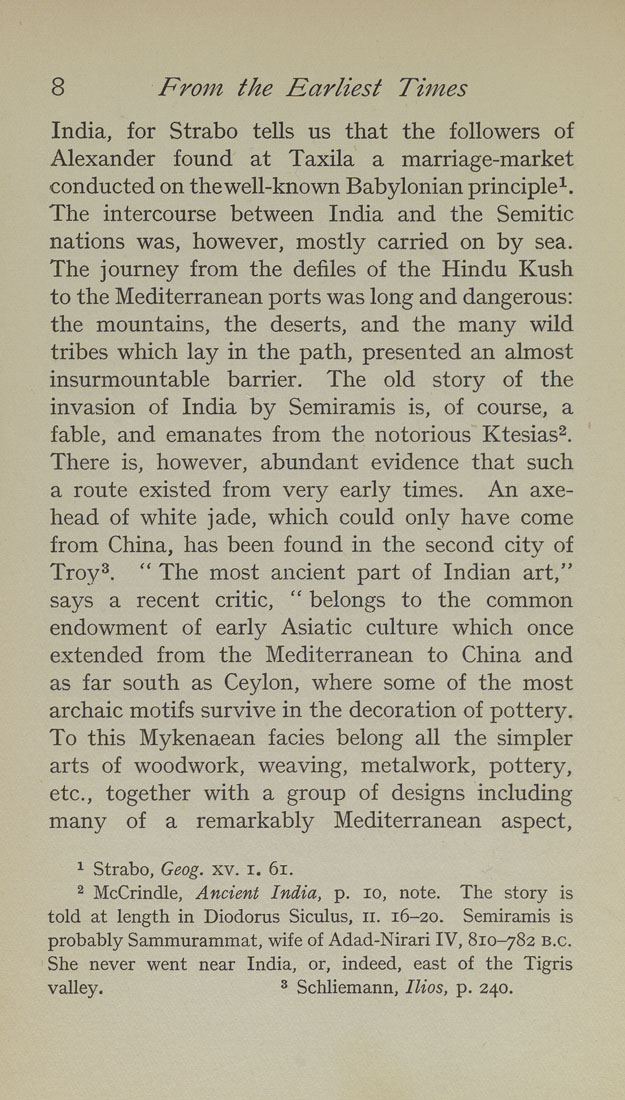8 From the Earliest Times
India, for Strabo tells us that the followers of
Alexander found at Taxila a marriage-market
conducted on the well-known Babylonian principle^.
The intercourse between India and the Semitic
nations was, however, mostly carried on by sea.
The journey from the defiles of the Hindu Kush
to the Mediterranean ports was long and dangerous:
the mountains, the deserts, and the many wild
tribes which lay in the path, presented an almost
insurmountable barrier. The old story of the
invasion of India by Semiramis is, of course, a
fable, and emanates from the notorious Ktesias^.
There is, however, abundant evidence that such
a route existed from very early times. An axe-
head of white jade, which could only have come
from China, has been found in the second city of
Troy^. " The most ancient part of Indian art,"
says a recent critic, " belongs to the common
endowment of earl}-^ Asiatic culture which once
extended from the Mediterranean to China and
as far south as Ceylon, where some of the most
archaic motifs survive in the decoration of pottery.
To this Mykenaean facies belong all the simpler
arts of woodwork, weaving, metalwork, pottery,
etc., together with a group of designs including
many of a remarkably Mediterranean aspect,
1 Strabo, Geog. xv. i. 6i.
2 McCrindle, Ancient India, p. lo, note. The story is
told at length in Diodorus Siculus, ii. 16-20. Semiramis is
probably Sammurammat, wife of Adad-Nirari IV, 810-782 B.C.
She never went near India, or, indeed, east of the Tigris
valley. ^ Schliemann, Ilios, p. 240.
|








